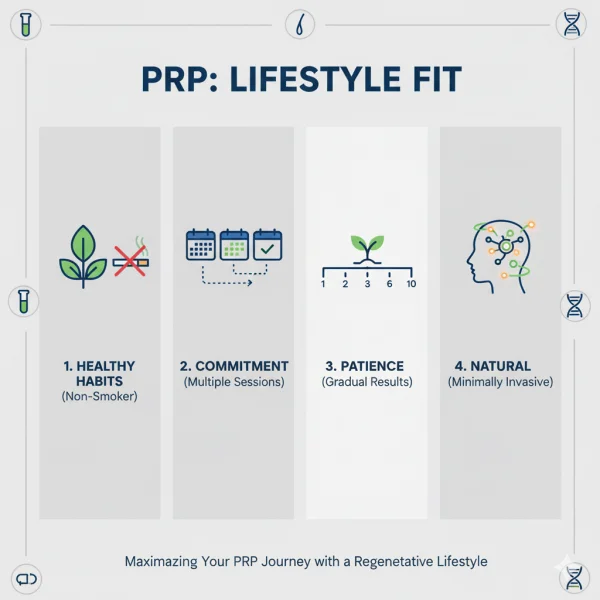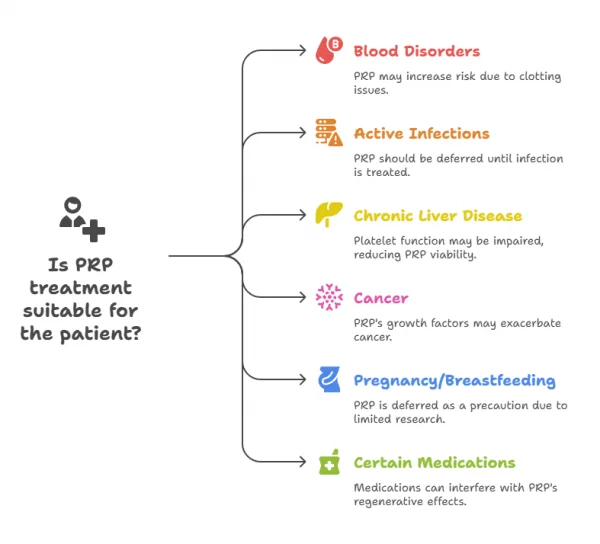When it comes to aesthetic or wellness treatments, the most challenging part often isn’t the procedure itself. It’s deciding if you’re the right fit in the first place. PRP (Platelet-Rich Plasma) therapy sounds promising – your own blood, concentrated and reinjected to stimulate healing and renewal. But beneath the buzz lies a question many people whisper to themselves: Will it really work for me?
The uncertainty makes sense. You’ve probably seen the glossy before-and-after shots, maybe even read a headline about a celebrity swearing by “vampire facials.” Yet, stories on the other side exist too: people who paid for multiple sessions and left wondering what all the fuss was about. The truth is that PRP isn’t a one-size-fits-all solution. It shines in the right circumstances – like early signs of ageing or mild hair thinning – but can underdeliver when expectations lean toward dramatic, overnight transformations.
And here’s the rub: deciding whether to try PRP isn’t just about vanity. It’s about time, money, and putting your trust in a process that relies on your biology. Get it right, and you may enjoy gradual, natural improvements in skin texture, hair density, or even joint comfort. Get it wrong, and you risk disappointment – not because PRP is a scam, but because it was never the right fit for your needs in the first place.
So, who really benefits from PRP – and when should you think twice before booking that first session?
Our Preferred Partner - Cellenis PRP
Not all PRP systems are created equal — and the quality of preparation makes a big difference to outcomes. That’s why many leading clinics choose Cellenis® PRP, a clinically validated system designed to deliver highly concentrated, pure platelet-rich plasma every time. By using a closed, sterile kit and advanced centrifugation, Cellenis® ensures consistency, safety, and optimal platelet yield — the growth factors your skin, hair, or tissue rely on for regeneration. Whether the goal is brighter skin, fuller hair, or faster recovery, Cellenis® PRP offers practitioners and patients confidence in both the science and the results.
Who Might Benefit From PRP Therapy?
If you’re exploring natural, minimally invasive solutions for skin, hair, or joint issues, PRP (Platelet-Rich Plasma) therapy may have caught your attention. But is it right for your needs? Here’s what you should know about who benefits most from this regenerative treatment.
A Treatment Best Suited to the Early Signs of Change
PRP is particularly effective for individuals noticing subtle but persistent changes — think dull skin, early hair thinning, or joint stiffness that doesn’t quite justify surgery.
UK NHS guidance confirms that PRP therapy is a minimally invasive, safe treatment option most effective for early-stage joint, tendon, and skin issues, helping to stimulate natural healing and tissue regeneration over time (NHS, 2025; NICE, 2018).
- Skin Rejuvenation: PRP can help restore glow and firmness in those experiencing fine lines, mild laxity, or uneven texture. It’s especially popular among women in their 30s and 40s who want a refresh without fillers.
- Hair Restoration: Men and women with early-stage androgenetic alopecia (pattern hair loss) often see the best results. PRP stimulates dormant hair follicles and can slow further loss if caught early.
- Acne Scarring: For those dealing with lingering scarring or uneven skin tone post-acne, PRP may help remodel tissue when used alongside treatments like microneedling.
- Joint and Tendon Support: Active individuals with mild-to-moderate joint pain — often due to overuse or early-stage osteoarthritis — may experience reduced inflammation and faster recovery.
- Post-Treatment Healing: PRP is often used after laser resurfacing, surgery, or microneedling to accelerate healing and reduce downtime.
It’s Also About Lifestyle Fit
While PRP is safe and widely tolerated, it’s not a magic bullet. It works best for those who:
- Are in good overall health and don’t smoke
- Are willing to commit to multiple sessions (usually 3 or more)
- Understand that results are gradual and subtle, not instant.
- Prefer natural, minimally invasive options over synthetic interventions.
PRP therapy isn’t about reversing the clock overnight but supporting your body’s regenerative abilities. It could be an excellent fit if you're looking for a subtle, cumulative boost in skin, hair, or joint health.
Who Should Avoid PRP? (And Why)
PRP therapy has earned a reputation for being safe, natural, and effective — but it’s not suitable for everyone. Like any medical treatment, it’s essential to understand where it may pose risks or offer limited benefit. Before deciding if PRP is right for you, here's what you should consider.
When PRP May Not Be Safe or Effective
While PRP uses your blood, certain health conditions and medications can make it unsuitable or reduce its effectiveness.
- Blood Disorders or Platelet Dysfunction
If you have a bleeding or clotting disorder or a low platelet count, PRP may not work effectively, or it could potentially increase the risk. - Active Infections or Inflammatory Skin Conditions
Any skin infection at the treatment site or systemic disease in the body should be thoroughly treated before PRP is considered. - Chronic Liver Disease
The liver plays a role in producing clotting factors. In liver disease, platelet function may be impaired, making PRP less viable. - Cancer
Especially blood or skin cancers. Because PRP involves growth factors, it's generally avoided in people with active cancer diagnoses. - Pregnancy and Breastfeeding
Not necessarily dangerous, but as a precautionary measure (due to limited research), PRP is often deferred during pregnancy and while breastfeeding. - Use of Certain Medications
Regular use of NSAIDs (such as ibuprofen or naproxen), anticoagulants, or corticosteroids can interfere with PRP’s regenerative effects. Always disclose medications during consultation.
When Expectations Outpace Reality
PRP works best when used for the right concerns and with a realistic timeline.
- Seeking Immediate or Drastic Results
PRP isn’t a quick fix. Results develop gradually over weeks or months, and multiple sessions are usually required. - Severe Ageing or Advanced Hair Loss
In cases where structural support is significantly lost or hair follicles are no longer viable, PRP may not deliver the desired improvement level. - Not Willing to Commit to a Full Treatment Plan
Skipping sessions or cutting a course short can significantly affect results. PRP is a cumulative therapy, and consistency is key.
Many patients are surprised to learn that while PRP is “natural,” it still requires careful screening and planning. It’s a brilliant treatment when used in the right hands, for the right reasons — but it’s not a blanket solution
Questions To Ask Before You Say Yes To PRP
Deciding whether to proceed with PRP therapy is a personal and medical decision — one that should be informed, not impulsive. Here’s how to ensure you’re making the right call for your body, your goals, and your peace of mind.
Know What You’re Signing Up For
Understanding the treatment process, risks, and expected outcomes is essential before moving forward.
- What is the full treatment plan, and how many sessions will I need?
Most PRP therapies involve a series of 3–6 sessions, spaced a few weeks apart. Your practitioner should tailor this to your individual goals. - What results can I realistically expect?
PRP offers subtle, gradual improvements rather than dramatic changes. Ask for examples of past patient outcomes similar to your concern. - What are the risks, side effects, and contraindications?
A trustworthy provider will openly explain the potential downsides, including swelling, bruising, infection risk, or lack of visible results in some cases. According to NICE guidelines, thorough screening before PRP therapy is essential to identify contraindications such as clotting disorders, active infections, and pregnancy, ensuring patient safety (NICE, 2018). - Is your clinic using high-quality, clinically validated PRP preparation systems?
Not all PRP is created equal. The type of centrifuge used, how blood is handled, and whether the PRP is leukocyte-rich or poor can impact results.
Assess Your Readiness
PRP works best when the patient is informed, motivated, and physically prepared.
- Am I healthy enough to undergo PRP safely?
Disclose any medical conditions, medications, or recent illnesses that could interfere with healing or increase risk. - Can I afford the full course of treatment?
PRP is often not covered by insurance. Budget realistically for initial sessions and possible maintenance treatments every 6–12 months. - Am I okay with gradual results?
PRP may not meet your expectations if you’re expecting an overnight transformation. Progress is often visible after several weeks or months. - Have I explored and ruled out alternative or complementary treatments?
Sometimes, PRP works best with microneedling, laser therapy, or hair regrowth agents like minoxidil. A good practitioner will discuss options, not push a single solution.
PRP can be a powerful, natural tool in your wellness or aesthetic journey — but only when chosen with clarity, not just curiosity.
PRP By Age And Life Stage
PRP therapy isn’t just for one age group or skin concern. Because it works by stimulating your body’s natural healing processes, its benefits can be adapted to suit different stages of life. Here’s how PRP therapy fits into your aesthetic or wellness routine at every age.
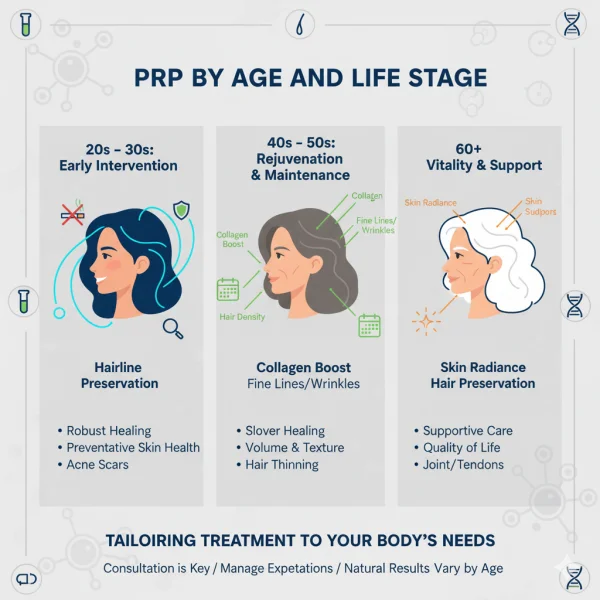
How PRP Supports Different Goals Across the Decades
Whether taking a proactive approach in your 20s or looking for restoration in your 40s, PRP offers something distinct at each stage.
In Your 20s to Early 30s: Prevention and Subtle Refinement
- Early intervention: Ideal for those starting to notice the first signs of skin dullness, enlarged pores, or fine lines.
- Post-acne repair: Helps minimise acne scarring, especially when combined with microneedling or light resurfacing.
- Hair support: Can help tackle early-onset hair thinning in men and women by promoting follicle health before significant loss occurs.
In Your Mid-30s to 40s: Regeneration and Recovery
- Collagen stimulation: At this stage, natural collagen production begins to slow. PRP helps reactivate fibroblasts, improving skin tone and elasticity.
- Skin rejuvenation: Used to soften fine lines around the eyes and mouth, improve under-eye texture, and restore radiance to tired-looking skin.
- Scalp support: Particularly helpful for postpartum hair loss or hormonal changes that impact hair density.
- Post-procedure healing: Accelerates recovery when paired with treatments like laser resurfacing or subcision for scars.
In Your 50s and Beyond: Complementary and Maintenance Support
- Structural support: While PRP won’t replace lost volume, it improves skin quality, texture, and hydration, making it an excellent companion to dermal fillers or skin boosters.
- Thinning skin: Especially useful around the eyes, neck, and décolletage, where skin becomes more fragile and prone to creasing.
- Joint and musculoskeletal care: For active adults or those managing osteoarthritis, PRP may offer pain relief and support tissue repair.
PRP isn’t a one-size-fits-all solution, but it’s incredibly versatile. Whether your goal is prevention, regeneration, or recovery, a well-timed course of PRP can support your skin and wellbeing in a natural, targeted way.
Comparing PRP To Other Options
If you’re weighing up Platelet-Rich Plasma (PRP) therapy against other aesthetic or regenerative treatments, you’re not alone. Many people want to understand how PRP stacks up in terms of results, downtime, safety, and cost. Here’s a balanced breakdown to help you decide which option fits your goals.
When PRP Shines — And When Other Treatments Might Be Better
PRP isn’t a universal substitute, but it offers unique advantages depending on what you’re treating.
PRP vs. Dermal Fillers
- PRP enhances skin quality over time by stimulating collagen and elastin — great for fine lines and texture.
- Fillers offer immediate volume restoration, ideal for deeper wrinkles or hollow areas (e.g. cheeks, under eyes).
- PRP is more natural and gradual, while fillers deliver structure and shape with visible results in a single session.
PRP vs. Botox
- Botox temporarily relaxes muscles to smooth dynamic wrinkles (forehead lines, crow’s feet).
- PRP improves skin tone and texture, but won’t treat muscle-driven lines.
- Many patients combine both for a holistic anti-ageing strategy: Botox for movement lines, PRP for overall skin health.
PRP vs. Microneedling (Standalone)
- Microneedling alone stimulates collagen by creating micro-injuries in the skin.
- PRP with microneedling amplifies the effect by delivering growth factors directly into the treated areas.
- The combination is especially effective for acne scars, enlarged pores, and uneven tone.
PRP vs. Laser Treatments
- Laser resurfacing targets pigmentation, texture, and fine lines with light-based energy — results are often more dramatic but involve more downtime.
- PRP is less invasive, with fewer risks for hyperpigmentation, making it better suited for sensitive or darker skin types.
- Some clinics use PRP post-laser to accelerate healing and reduce redness.
PRP vs. Hair Transplant Surgery
- PRP is best for early to moderate thinning — it stimulates follicles, improves scalp circulation, and can slow hair loss.
- Transplants are better for significant balding where follicles are no longer viable.
- PRP can enhance results after transplant surgery by improving graft survival.
Ultimately, PRP therapy stands out for those seeking a natural, regenerative approach with minimal risk. However, it’s most effective when used strategically, alone or in combination with other treatments.
Real Talk: Making The Final Decision
Deciding whether to have PRP therapy is about more than just liking the idea — it’s about knowing it aligns with your health, expectations, and goals. If you’re sure, this final sense check can help clarify whether you’re ready to move forward or need more time to explore your options.
Confidence Comes from Clarity
Before committing to PRP treatment, check in with yourself and your practitioner on the following:
Are your concerns treatable with PRP?
- PRP works best for early signs of ageing, mild hair thinning, scar healing, and skin texture concerns.
- It’s unsuitable for deep-set wrinkles, severe volume loss, or complete baldness.
Have you ruled out any medical red flags?
- Ensure you’ve had a full consultation to assess your suitability, including medical history, medications, and current health conditions.
- If you’re pregnant, immunocompromised, or on certain medications, PRP may not be advised.
Have you set realistic expectations?
- Results are gradual — usually visible after a few weeks, with best outcomes seen after multiple sessions.
- It enhances, not transforms. Think “freshened” rather than “frozen” or dramatically altered.
Are you emotionally and financially prepared?
- Feeling pressure to “fix” something quickly often leads to disappointment. PRP is best when chosen calmly and with clear intent.
- Consider the cost of a full treatment plan (usually 3–6 sessions) and any ongoing maintenance every 6–12 months.
Have you found a reputable practitioner?
- Ask about their experience, training, and equipment. A good clinic should show before-and-afters, explain the science, and never push a sale.
- Transparency is key: you should understand every step of the process, risks included.
PRP isn’t right for everyone — and that’s okay. What matters most is that your decision feels informed, confident, and grounded in expert advice.
Conclusion
PRP therapy isn’t about chasing perfection— but working with your body’s natural potential to restore, strengthen, and renew. Whether you’re curious about softening fine lines, supporting hair growth, or easing joint discomfort, PRP offers a compelling alternative to more invasive or synthetic treatments. However, the decision to move forward should always start with clarity, not just curiosity.
If you’ve recognised yourself in the signs and scenarios outlined in this guide, it may be time to explore a personalised conversation with a qualified practitioner. No hard sell. Just a thoughtful, evidence-led discussion tailored to your skin, health, and goals.
Ready to take the next step? Book a consultation with a trusted PRP specialist in your area and make an informed choice that feels right for you - today and in the long term.
Your PRP Questions
Real Questions from Real People — Answered
Straightforward answers to the questions people like you are asking right now about PRP.

Cost of PRP treatment for hair?
Please give the cost and how many sessions needed to prevent complete hair loss and new hair
Hair loss.
Dear reader My name is Mo I'm interested to have prp treatment in your clinic and I have some questions How many ml of prp i will get injured ? Did you analyse prp There any other services after the treatment is done Thank you
To view all the PRP questions, please click here.
Or click here to ask your own question.
Find A Verified Clinic
Trusted PRP Experts, Local to You
Easily connect with qualified, verified professionals for safe, reliable treatment.

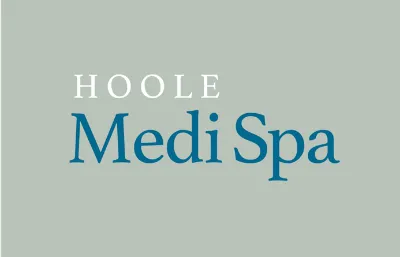
Hoole Medispa
51 Hoole Road, Hoole, Chester, CH2 3NH
Welcome to Hoole Spa and Aesthetics situated in the beautiful Grade II listed building in the suburbs of Hoole, Chester.
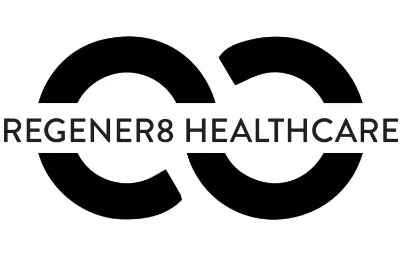
Regener8 Healthcare
42 Hewell Road, Barnt Green, Birmingham, B45 8NF
Regener8 Healthcare brings together a team of highly qualified specialists, who are all passionate about aesthetics, longevity and wellness treatments.
To find a PRP clinic near you, please click here.



